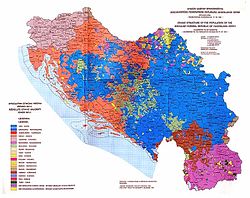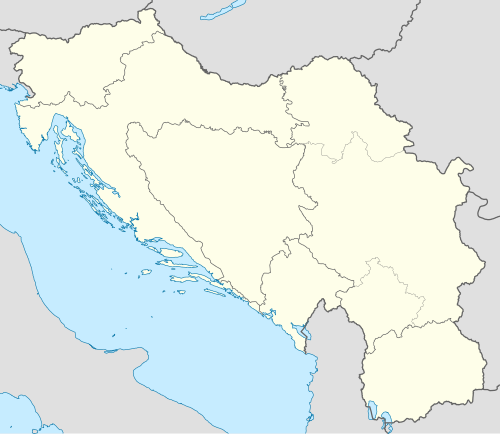Ethnic federalism in specific countries
Ethiopia

Ethiopia has over 80 ethno-linguistic groups and a long history of ethnic conflict. [10] After 17 years of armed struggle, in 1991 Meles Zenawi's party replaced the Derg (the Mengistu Haile Mariam-led military dictatorship in Ethiopia). Zenawi, up to then leader of the Tigray People's Liberation Front (TPLF) and the Ethiopian People's Revolutionary Democratic Front (EPRDF), wished to end what he imagined was a dominance of the Amharas of Shewa. [11] A new Constitution was introduced in 1994, dividing Ethiopia on ethnic lines into nine regional states and two multiethnic "chartered administrations" (Addis Ababa and Dire Dawa). [8] [12] : 54–55 Ethnic groups received rights to self-government: [6] the states were given autonomy in legislative, executive and judicial functions, [13] : 8 while there were provisions for ethnic groups to be represented in central institutions. Ethnic groups were granted the "unconditional right" to secession, [12] : 55 although it is doubtful whether any group could in fact achieve this. [14] [13] : 22 The government was aiming not only to reduce inter-ethnic conflict but to equalise living standards in different areas and improve the working of public institutions locally. [15]
There are different views on the success of the system. The country was described by a visitor in 2011 as "at peace, progressing towards prosperity". [10] The federal system produced stability relative to the previous situation of conflict between a centralised state and ethnically based "liberation fronts", [16] : 1 and the government has claimed that previously marginalised groups have benefited from the arrangement. [17]
In practice the autonomy of the regional states has been limited by the centralised and authoritarian nature of the ruling political party, the EPRDF, [14] [16] : 5 which has encroached on regional affairs and thus lost its legitimacy as a "neutral broker". [6] The system, while aiming to establish the equality of ethnic groups in Ethiopia, [3] has been found to harden ethnic identities ("The distinction between affective and political communities disappears ... when ethnic group identity serves not just as a source of affectivity but also as a source of political identification") [12] : 59 and to promote inter-ethnic conflicts, especially in ethnically mixed areas. [17] [18] Inter-ethnic conflict has dramatically increased since the accession to power of Abiy Ahmed in 2018. [8] The system has given rise to demands for further separate ethnic territories. [16] : 3 [ verification needed ]
According to political analyst Teshome Borago, "Zenawism" contradicts the political philosophy behind the African Union, in that every African nation agreed to keep the colonial boundaries after independence despite multiple tribes being placed together within national borders. In contrast, Zenawism is accused of promoting separatism and irredentism and may encourage African tribes to aim for their own independent states. [19] [ verification needed ]
Nepal
The ethnic aspect of a new federal structure in Nepal has been a source of contention through the constitution-building process of recent[ when? ] years. Multiparty democracy was introduced in Nepal in 1990 after a popular uprising led by the Congress party and the United Left Front, a coalition of communist parties. Ethnic issues did not emerge prominently in the drafting of the new constitution. [6] Campaigns for more recognition of ethnic issues were led by Nepal Federation of Indigenous Nationalities (NEFIN) representing the ethnic groups of the hills, the regional Sadbhawana party of the Terai, and the UCPN (Maoists) [6] under pressure from the Madhesi people of the south. [7] : 10 [20]
Following the 2006 democracy movement in Nepal and the overthrow of the monarchy, an Interim Constitution was promulgated in 2007. [21] Years of debate in two consecutive Constituent Assemblies centred on whether to base federalism upon ethnicity or a common identity, as well as over the number and locations of provinces. [22] An opposition front led by the UCPN called for a federal system based on 13 ethnically defined provinces. [23] The ruling Nepali Congress and CPN-UML parties rejected the idea, arguing that ethnicity-based federalism would create tension among ethnic castes and communities. [24] Resistance also came from the upper-caste Brahmin and Chhetris, who feared that their long-standing political dominance would be threatened by ethnic federalism. [7] : 14
The three parties later agreed on nine founding principles for establishing provinces; five of these were identity-oriented, referring to ethnic and cultural ties. This led to the adoption of the term "ethnic federalism" to describe the structure proposed for Nepal, although some of the principles in fact referred to the wider notion of identity rather than ethnicity. The drawing of borders was complicated by the demographic distribution in many regions; there are over 100 officially recognised ethnic groups in Nepal, and many of them are geographically dispersed and do not form a majority in any territory. [7] : 11–12 [23]
The present federal Constitution was finally adopted in September 2015. [25] It established a federal structure to replace the existing unitary structure. The country was divided into seven federal provinces formed by grouping existing Districts. [26] The promulgation of the new constitution was immediately followed by protests on the part of the Madhesi and indigenous population, mainly over the boundaries of the new provinces, fearing a diminution of their political representation. [27]
Pakistan
Following the secession in 1971 of East Pakistan to become Bangladesh, the Pakistani government sought ways to accommodate the ethno-nationalist demands of the different groups within what had been West Pakistan. The 1973 Constitution imposed a federal structure giving autonomy to the four main provinces, each historically identified with an ethno-linguistic group: the Punjabis, Sindhis, Balochis, and Pakhtuns. The political identity of these groups was legally recognised in the Constitution, giving them a status distinct from that of other groups. The provisions for autonomy were, however, fully implemented only in the province of Sindh. [9] Through the subsequent period of military regimes and conflicts in different parts of Pakistan, the federal system did not appear to confer stability comparable to that of India. [28]
The Constitution was re-introduced, with amendments, in 2010. This time all four provinces received "formidable autonomy in terms of both legislative and financial powers". [9] : 126 In general the changes were marked by increased "ethnicization", encapsulated in the renaming of North West Frontier Province to Khyber Pakhtunkhwa ("land of Pakhtuns"). The changes were seen as "an important step forward" in strengthening the provinces, but there seemed to be little willingness to go further towards a fully multi-ethnic structure catering for all groups. [29] The system has been described as "highly counter-productive" [9] : 124 in respect of reigniting violent ethnic conflict between Sindhis and Muhajirs in Sindh. It has also evoked demands for separate provinces on the part of Hazarewals and Saraikis. [9]
Indeed, it has been asserted that "Pakistan is seldom acknowledged as an ethnic federation". [9] : 91
South Sudan

South Sudan became independent of Sudan in July 2011, and initially the transitional constitution established 10 federal states and 79 counties, mostly based on ethnicity. Inter-communal conflict mounted, and there were calls from various groups for creation of further ethnocentric states and counties. Stephen Par Kuol, then minister of education in Jonglei state, opined in 2013 that "ethnic federalism" in his country had proved "divisive" and "expensive to run" and did not make for real democracy, and called for multi-ethnic states and counties to be created at least around the main cities. [30]
In October 2015, South Sudan's President Salva Kiir issued a decree establishing 28 states, again largely along ethnic lines, to replace the former 10 states. [31] The measure was approved in parliament in November, [32] although in February 2020 the number of states in South Sudan returned to 10. [33]
Yugoslavia

The 1946 constitution of the Socialist Federal Republic of Yugoslavia created a federation of six republics. To the three nationalities identified in the former name of the country - Kingdom of the Serbs, Croats and Slovenes - were added the Macedonians, Montenegrins and Bosnian Muslims (now Bosniaks). Alongside the recognition as nations of these republics, a strong central government was established under the control of the Communist Party.
From the 1970s a division developed within the Communist government, between Croatian and Slovenian supporters of greater autonomy for those republics, and Serbian advocates of a centralized federation to preserve the leading position of Serbs as the largest nationality within the country. [34] Opposition to Communism was expressed in the form of a growing nationalism. [35]
After the central authority waned in the 1980s, the leaderships of the republics increasingly pursued the interests of their own territories and inter-ethnic tensions mounted. Between 1991 and 2006 the six constituent republics all became independent nations; the earlier years of this process were marked by a series of wars. The lesson drawn was:
"Ethnic federalism seems to be a good solution only if it is applied moderately, ... in an atmosphere of democratic political culture, mutual tolerance, and the sincere wish to live together in peace with other ethnic groups". [36]
